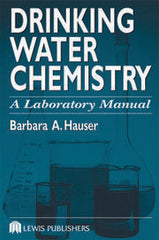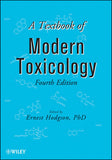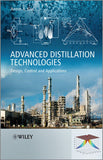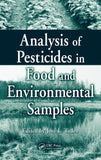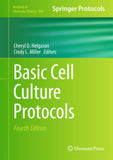Drinking Water Chemistry A Laboratory Manual By Barbara Hauser
Book Description
Whether you are a new employee or seasoned professional you need easy access to the latest test methods, updated quality control procedures, and calculations at your fingertips. You need to perform analyses quickly and easily and troubleshoot problems as they arise. You need a resource that is not only informative, but also practical and easy to use. Drinking Water Chemistry: A Laboratory Manual fills this need.
The book gives you a thorough overview of the most basic, and therefore important, laboratory topics such as:
Laboratory Safety - dos and don'ts based on real experience
Sampling - preservation techniques, online sampling, and record keeping
Laboratory Instruments - practical use ranges, principles of operation, calibration, conditioning, useful life and replacement, common quality control issues
Chemical Use - reagents, standards, indicators, purpose and use, chemical quality and properties, avoidance of contamination, molecular weight calculations
Quality Control - replicate analyses, spiked, split, and reference samples, percent recovery of standard, standard deviation, control charts, and everyday quality control measures
Weights and Concentrations - care and analytical balances, mathematical conversions among concentration units, dilutions and concentration changes
The remaining chapters cover test analysis including: reason for the test, type of sample taken, treatment plant control significance, expected range of results, appropriate quality control procedures, apparatus used, reagents, including function, concentration and instructions for preparation, procedural steps, calculations and notes on possible problems, and references.
This is a working manual, meant to be kept by your side in the lab, not on the shelf in an office or library. You can bend it, you can lay it flat, you can take it anywhere you do your job. Useful and practical Drinking Water Chemistry: A Laboratory Manual provides the information you need to perform tests, understand the results, apply them to the determination of water quality before and after treatment, and troubleshoot any problems.
Table of Contents
Sampling
Laboratory Safety
Weights, Volumes, and Concentrations
Laboratory Chemicals
Laboratory Instruments
Quality Assurance and Control
Total Alkalinity
Total Hardness
Acidity
Water Softening
Turbidity
Chemical Dosage: Jar Testing
Chlorine Residual
Chlorine Demand
Chloride
Specific Conductance
Langelier Index
Color
Odor
Fluoride
Sulfate
Dissolved Oxygen
Solids
Nitrogen
Phosphorus
Atomic Absorption Spectrometry
Appendix I: Practice Problems
Appendix II: Useful Conversions
Appendix III: Bibliography
Appendix IV: Common Icons
Appendix V: Useful Conversions
Appendix VI: Bibliography
Related Products
-
A Textbook of Modern Toxicology,...
8,942.00
10,520.00 -
Advanced Distillation Technologi...
13,500.00
15,000.00 -
Analysis of Pesticides in Food a...
2,895.00
13,068.00 -
Analysis of Pesticides in Food a...
10,900.00
12,175.00 -
Basic Cell Culture Protocols 4th...
10,700.00
12,559.00
- Architecture & Construction Management Books
- Biochemistry, Bioengineering and Biotechnology Books
- Books on Analytical Techniques, GC MS, LC, TLC, HPLC, NMR Spectroscopy
- Books on Water and Wastewater Treatment, Analysis Water Treatment Plants
- Chemical Technology, Organic Chemistry, Chemical Synthesis and Chemical Analysis Books
- Cosmetics Science, Cosmetics Formulations, Manufacture and their Analysis Books
- Drugs and Pharma Science Books
- Essential Oils, their Analysis, Natural Products Extraction, Distillation , Isolates Related Books
- Flavor Science, Flavor Analysis, Flavor Creation, Food Flavors Books
- Food Science and Technology, Baking , Food Ingredients , Food Quality , Food Regulations
- Formulations of Perfumes for Agarbatti, Air Freshners, Soaps & Detergents, Fabric Softeners , French style Perfumes, Attars , OUD, Fine Fragrances
- Fragrances, Scents, Attars , Perfumery and Aroma Chemicals Books
- Herbal, Ayurvedic, Medicinal Plants and Aromatic Plants Books
- Law Books
- Major Reference Works (MRWS) Sets - MultiVolume Sets
- Medical Books
- Medical Journals Wolters Kluwer | Medknow India
- NEW ARRIVALS
- Perfumer's Resources
- Special Indian Reprint !



